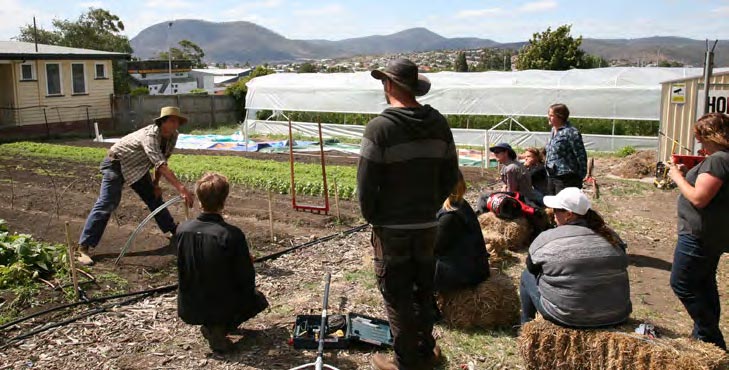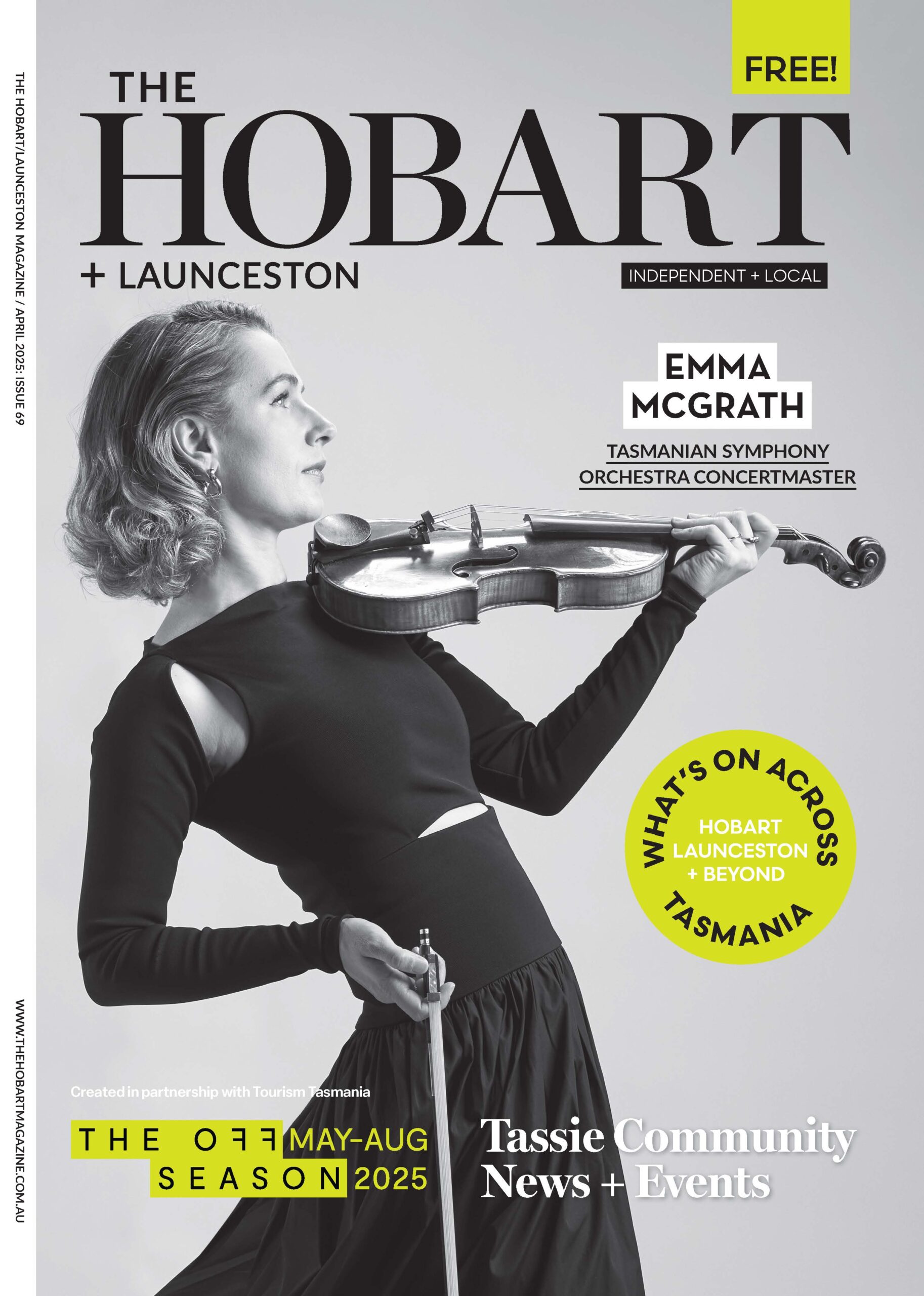Hobart City Farm was founded by a collective in 2014 – James Da Costa, Bridget Stewart, Louise Sales, Sam Beattie and Hannah Maloney. It’s a not-for-profit organisation, run like a social enterprise, focused on running a vibrant, financially viable and environmentally regenerative small farm growing a diverse range of food. It also builds community and provides meaningful employment.
One of the founding team, Bridget Stewart shared, “We ran a very successful crowdfunding campaign in November 2014 and raised over $13,000 to assist in start-up costs, with perks for our supporters like beehives complete with bees, garden makeovers, permaculture designs and seeds. Since then we have been working on the land building structures like a polytunnel, shed, nursery area and we have extended the site.”
How did you choose the site? We found the site through connection with Kickstart Arts, who also operate from St. John’s Park. They were hoping to start something on the otherwise unused land and we approached them to discuss leasing the land to establish a city farm. They were very supportive and we still currently farm on this original plot of land.
What does Hobart City Farm produce? Vegetables! We grow a diverse range of seasonal vegetables (mostly annual crops) using organic methods. Over Summer, for example, we grew tomatoes, basil, peppers, spring onions, mesclun, head lettuce, spinach, rocket, kale, silverbeet, pak choi, parsley, coriander, beetroots, carrots, cucumbers, zucchini and more. Over winter we grow garlic, green manure crops and some over-wintering crops.
Where does the produce end up? We sell direct to the public, via our online shop Harvest Feast, New Town Greenstore and restaurants and cafes like Sweet Sassafrass, Pollen Tea Room, Peacock and Jones, Rough Rice and Pigeon Whole Bakers. We also donate excess produce to other organisations including school garden programs and more recently Food Not Bombs.
Who works at the farm? Are they paid or volunteer, or a mixture of both? The main farmers are James Da Costa, Sam Beattie and Bridget Stewart. We aim to pay ourselves wages based on what we earn through sales of vegetables. This varies depending on the season –the good news is our average hourly wage is improving! We also have working bees a couple of times a year and usually have about 30 people along to help with planting, garden bed construction, path-making and other larger tasks. We have had horticulture students do their work placement with us over an extended period.


